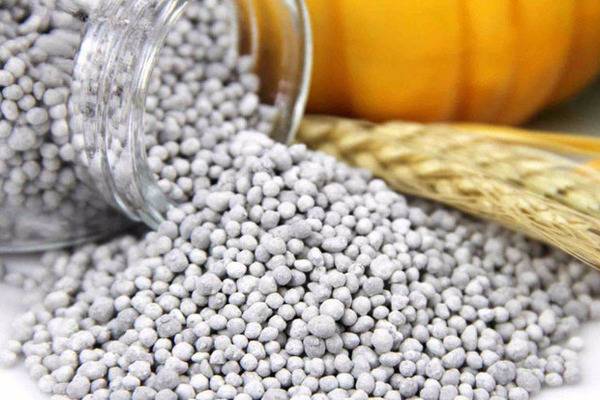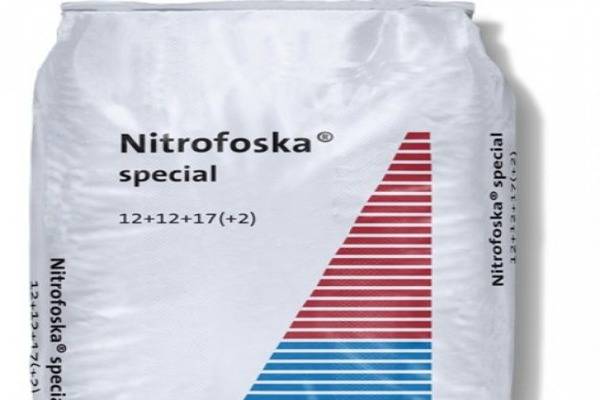Content
Usually, mineral supplements are selected whose components are most beneficial and at the same time easily absorbed by plants. Nitrophoska is a complex fertilizer, the main elements are nitrogen, phosphorus, and potassium. The drug is produced in white or blue granules, which do not cake during storage and quickly dissolve in water.
This fertilizer can be used on soils with any composition, but it is preferable to use on neutral or acidic soils.
Types of fertilizer
Since granules are produced using different technologies, the end results are slightly different compositions:
- sulfuric acid - sulfur added together with nitrogen is involved in the synthesis of plant proteins and promotes better absorption of nitrogen. Additionally repels some pests (ticks). Excellent for feeding cucumbers, tomatoes, cabbage and beans. It shows up best on soddy-podzolic soils;
- sulfate has a high potassium content. It is most effective when used when growing flowers.Since potassium is an important element for the full formation of flower buds and determines the size of flowers, their number and color saturation. It is recommended to use sulfate nitrophoska when growing deciduous ornamental plants;
- phosphorite nitrophoska is valued as a top dressing for tomatoes, as it promotes the formation of ovaries.
It is allowed to use nitrophoska as the main fertilizer for sowing, transplanting and during the growing season of plants. Apply fertilizer in the form of granules or solution:
- when using dry feeding, use a mixture with an equal amount of all components (16:16:16);
- if you plan to use a solution, then choose a composition containing magnesium (15:10:15:2).
Nitrophoska should not be confused with Azophoska (nitroammophoska). These are substances that have approximately the same set of elements. However, the norms for applying fertilizing do not coincide. Because azophoska contains more phosphorus and nitrogen (and phosphorus is contained in a completely water-soluble form).
Use on a summer cottage
Since the production conditions and composition are indicated on the packaging, it will not be difficult to choose a fertilizer taking into account the needs of a specific plant crop. It is recommended to add fertilizer to the soil in the spring, directly when digging the site or when forming holes, because nitrogen is easily washed out. Sometimes the mixture is added to the ground in the fall - in the case of heavy dense soils (clayey, peat). Fertilizer is applied during deep digging of the earth at the rate of 75-80 g per square meter of area.
For potatoes
Nitrophoska is important for obtaining a high yield. It is necessary to choose a composition that is chlorine-free.Place granules when planting tubers (put 1 tbsp of the mixture into each hole and mix well with the soil). On large areas, it makes sense to spread fertilizer when digging the entire area (in spring or autumn) at a rate of 80 g/sq.m. m.
Feeding cabbage
To obtain a harvest rich in vitamins, salts, and proteins, nitrophoska sulfate is used. A week and a half after picking cabbage, fertilizer is used in the form of a solution (10 g per liter of water).
If the soil was not fed when growing seedlings, then nitrophoska is added when planting the seedlings. A teaspoon of granules is poured into the hole and mixed well with the soil. An excellent feeding option is a mixture of 1 kg of vegetable compost, 1 tsp of wood ash, 1 tsp of nitrophoska.
If fertilizer was not applied when planting cabbage, then after two weeks you can water the plants with a nutrient solution (60 g of nitrophoska per 10 liters of water). Some gardeners add 200 g to the solution wood ash to prevent plant diseases. The soil is fertilized again after two weeks. 30 g of the mixture are diluted in just 10 liters of water.
Fertilizing soil for cucumbers
Nitrophoska increases the yield of vegetables by about 20%, and all three components actively work: nitrogen increases the germination of seeds and promotes the active growth of shoots and leaves, potassium improves the taste of fruits, and phosphorus increases the density and juiciness of cucumbers.
When digging up a site in the spring, granules are poured at the rate of 30 g/sq. m. During subsequent watering of cucumbers, add a fertilizer solution (40 g per 10 liters of water). About 500 ml of solution is poured under the root of each cucumber.
Feeding tomatoes
Phosphate nitrophoska is best suited for this crop.When planting seedlings on a site, pour 1 tbsp into the holes. l granules and mix well with the soil. Or the transplanted seedlings are watered with a solution (50 g of granules are diluted in 10 liters of water). After half a month, the tomatoes are fertilized again.
Various vegetables
The use of nitrophoska for feeding other crops is also very common. Individual standards for vegetables are recommended:
- zucchini is fertilized twice. The first time fertilizing is applied before flowering, and the second time before fruiting. 200-300 g of nitrophoska are diluted in 10 liters of water. Approximately 1-1.5 liters are poured under the plant;
- It is recommended to fertilize the pumpkin when 4-5 leaves appear. In dry weather, 15 g of nitrophoska is diluted in 10 liters of water. Fertilizers are applied again when the vines are formed;
- bell peppers are fertilized when seedlings are planted on a plot or when 4-5 leaves appear (if seeds were planted in the ground). 50 g of granules are dissolved in 10 liters of water;
- It is recommended to fertilize eggplants half a month after transplanting the seedlings to the site. For 10 liters of water take 20 g of nitrophoska.
Or you can simply add 70-80 g of granules per square meter when digging.
Fruit trees and shrubs
In areas with sandy and sandy loam soils, the likelihood of rapid leaching of nitrogen increases, so nitrophoska is scattered in the spring when digging or directly when planting:
- When fertilizing fruit trees, the dry mixture is poured into a hole around the trunk (on heavily moistened soil). For pome trees, take 40-50 g of granules per square meter of area. Under stone fruit trees, pour 20-30 g per square meter;
- Dry granules are usually also poured under the bushes and the ground is dug up shallowly.For gooseberries and currants, 140-155 g per square meter is enough. You can pour 60 g under the raspberries.
When nitrophoska is applied in granules, they are evenly distributed over the soil surface. After digging the soil, it is recommended to water the soil generously.
Fertilizer storage
The granules are packaged in paper/plastic bags weighing 1, 2, 3 kg. Store fertilizer in a dark, dry place. Since the mixture is considered flammable and explosive, it should not be stored near fire.
Security measures
Nitrophoska is harmless to the skin and does not affect mucous membranes. However, as when working with any mineral fertilizers, it is better to use special protective equipment (rubber gloves).
If the solution gets into your eyes, it is recommended to rinse them thoroughly with clean water. If the solution accidentally gets into the stomach, it is advisable to rinse it.
Due to the presence of various nutrients, nitrophoska is widely used. Since the elements of the mixture are well dissolved and evenly distributed, the fertilizer promotes the friendly development of seedlings and intensive fruiting of crops.












